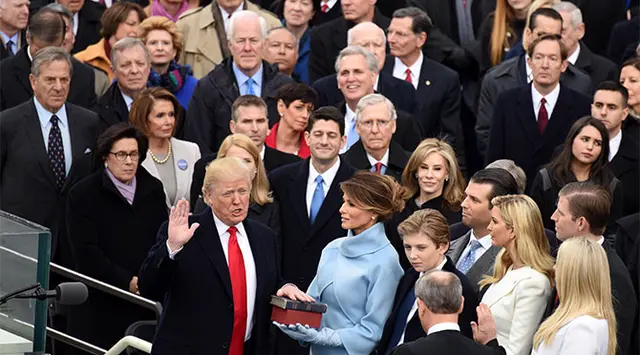**By ADP Writer
Lu Jiafei**
For U.S. President Donald Trump, the rationale behind his decision not to talk about future U.S. troop levels in Afghanistan was clear: you always have to keep the enemy in the dark.
With a track record of blasting U.S. war effort in Afghanistan and a constituency at home deeply skeptical about U.S. entanglement in its longest war in history, however, Trump was not speaking in a forthright way.
After a months-long internal debate over the Afghanistan war’s fate, Trump announced early this week that he bucked his “original instinct” to pull out of Afghanistan.
In his muscular but vague 30-minute nationally televised address, Trump put forward his Afghanistan and South Asia strategy without mentioning his plan for troop levels in Afghanistan.
“We will not talk about numbers of troops or our plans for further military activities,” said Trump, calling the practice of announcing such plan in advance “counterproductive.”
Trump’s secrecy argument represented a major departure from almost all his predecessors at least back to Wight D. Eisenhower, all of whom disclosed the overall number of U.S. troops deployed overseas for wars.
The absence of the central element in his presentation soon drew criticism from his political foes.
“Such a policy of secrecy with regard to timelines and troop levels also deprives the American people of the information they need to determine whether another escalation is taking place and the ability to hold their elected officials accountable for the results,” said Adam Schiff, top Democrat on the House Intelligence Committee in a statement.
Make no mistake, it wasn’t as if Trump could actually classify the troop levels in Afghanistan. It had already been widely reported that there would soon be a modest boost in the U.S. war effort in Afghanistan with an additional 3,900 troops.
Also, as the United States scrambles to not to lose in Afghanistan, it will inevitably need additional troops from NATO allies, who are currently deploying 5,000 forces on the ground in Afghanistan.
For any military coordination with its allies to succeed, the United States has to disclose its plan.
Thirdly, the White House would still have to make a budget request to the Congress that would include the cost of additional troops. Trump would be naïve to assume that the Congress, which traditionally holds a firm grip on the federal purse string, would let him loose on the issue.
While the professed secrecy surrounding U.S. troop levels is unlikely to serve the 16-year-old war militarily, it helped Trump to downplay an embarrassing reality that he was advocating, though reluctantly, a policy that contradicts his past statements.
To cite but one example, Trump in 2013 tweeted that the United States should “get out” of Afghanistan.
“We have wasted an enormous amount of blood and treasure in Afghanistan. Their (Afghan) government has zero appreciation,” Trump tweeted then.
Moreover, Trump’s tactic of not revealing U.S. troop levels in Afghanistan was more likely about politics than security in the fact that an overwhelming majority of Americans now oppose U.S. military boost in Afghanistan.
According to a POLITICO/Morning Consult poll released earlier this month, only one in five Americans said that the United States should increase the number of U.S. forces in Afghanistan.
Lu Jiafei, fellow of APD Institute. After spending one year in Palestine covering the Israeli-Palestinian conflict between 2013 and 2014, Lu moved to Washington, D.C. and covered the 2016 U.S. presidential election till the very end of Donald Trump’s upset victory. He is a political contributor to APD.
(ASIA PACIFIC DAILY)
 简体中文
简体中文



